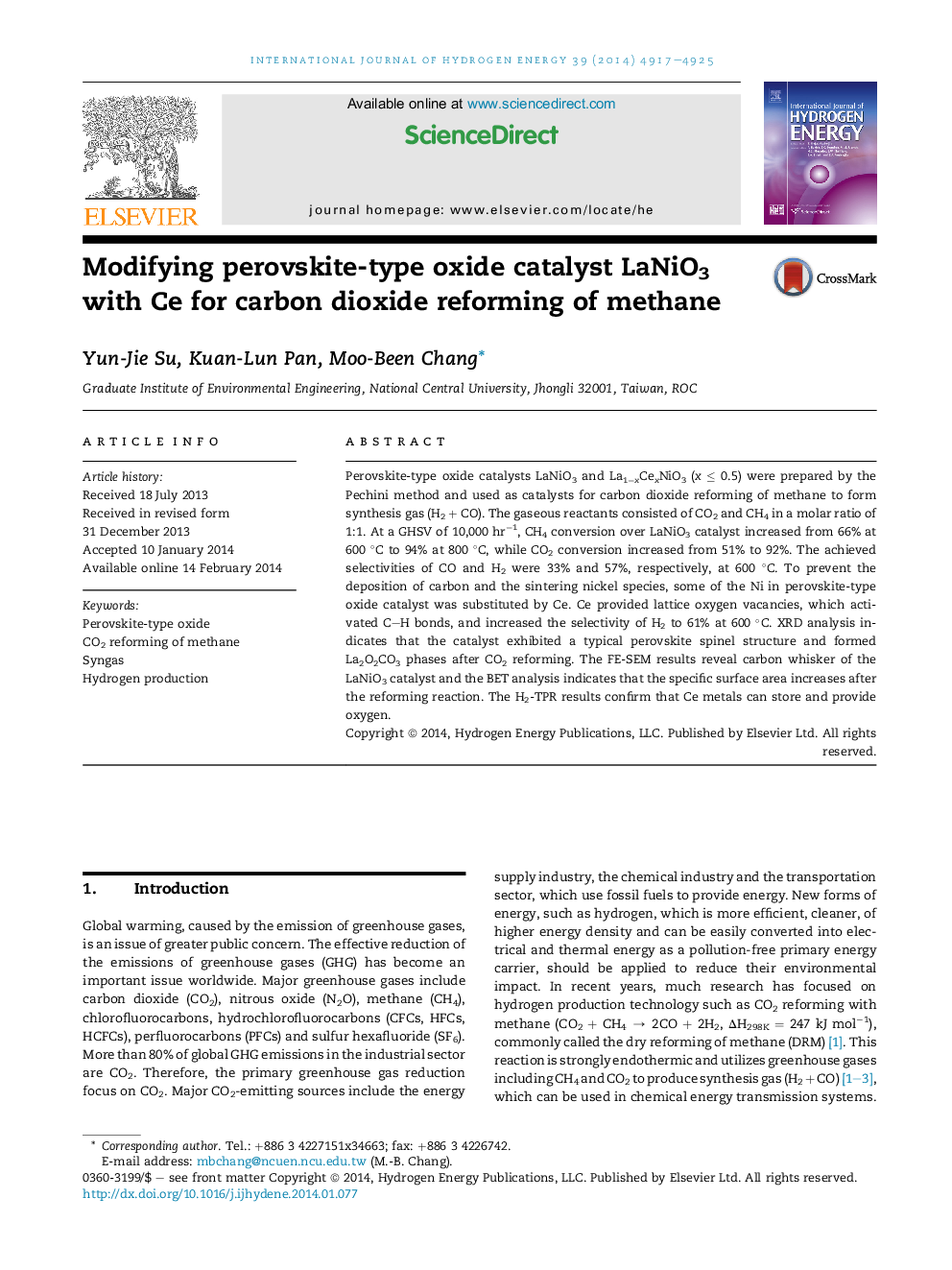| Article ID | Journal | Published Year | Pages | File Type |
|---|---|---|---|---|
| 1281258 | International Journal of Hydrogen Energy | 2014 | 9 Pages |
•CH4 and CO2 conversions over LaNiO3 and La0.9Ce0.1NiO3 catalyst are more than 90% at 800 °C.•La0.9Ce0.1NiO3 catalyst provides oxygen atoms to enhance the dissociative adsorption of methane on the catalyst.•La0.9Ce0.1NiO3 catalyst promotes the split of H atoms of the intermediates in the DRM.•Partial substitution of Ni with Ce results in higher H2 selectivity and catalyst stability compared with LaNiO3.
Perovskite-type oxide catalysts LaNiO3 and La1−xCexNiO3 (x ≤ 0.5) were prepared by the Pechini method and used as catalysts for carbon dioxide reforming of methane to form synthesis gas (H2 + CO). The gaseous reactants consisted of CO2 and CH4 in a molar ratio of 1:1. At a GHSV of 10,000 hr−1, CH4 conversion over LaNiO3 catalyst increased from 66% at 600 °C to 94% at 800 °C, while CO2 conversion increased from 51% to 92%. The achieved selectivities of CO and H2 were 33% and 57%, respectively, at 600 °C. To prevent the deposition of carbon and the sintering nickel species, some of the Ni in perovskite-type oxide catalyst was substituted by Ce. Ce provided lattice oxygen vacancies, which activated C–H bonds, and increased the selectivity of H2 to 61% at 600 °C. XRD analysis indicates that the catalyst exhibited a typical perovskite spinel structure and formed La2O2CO3 phases after CO2 reforming. The FE-SEM results reveal carbon whisker of the LaNiO3 catalyst and the BET analysis indicates that the specific surface area increases after the reforming reaction. The H2-TPR results confirm that Ce metals can store and provide oxygen.
